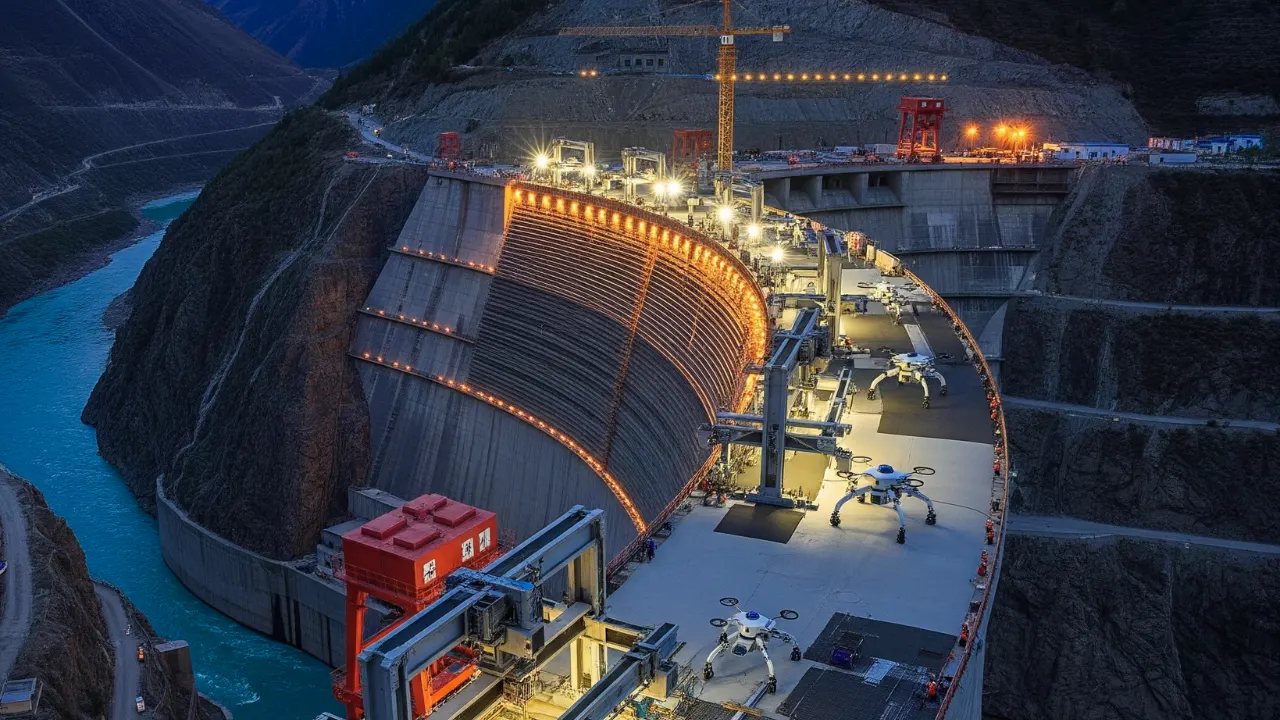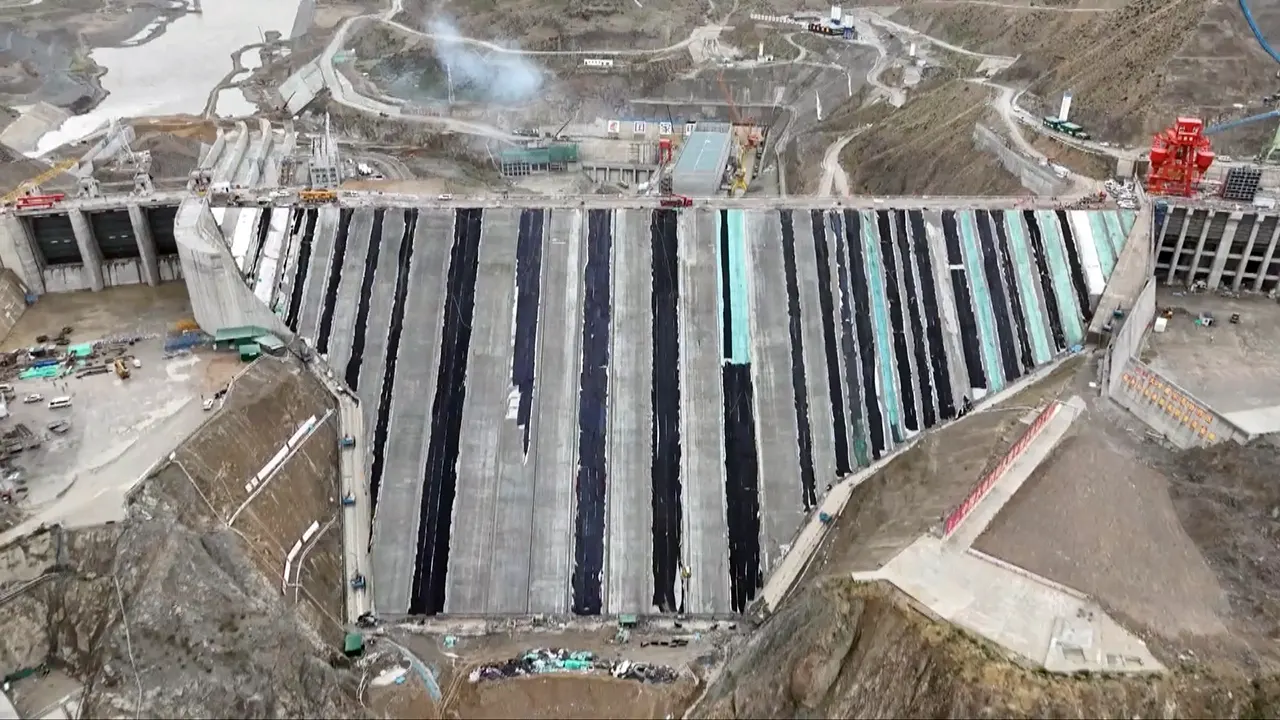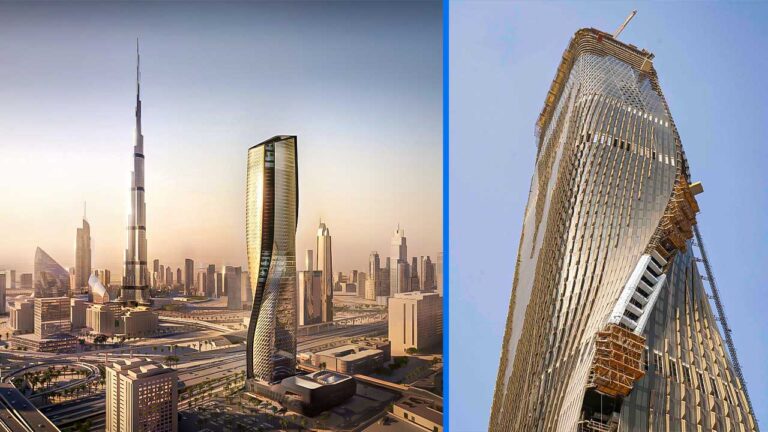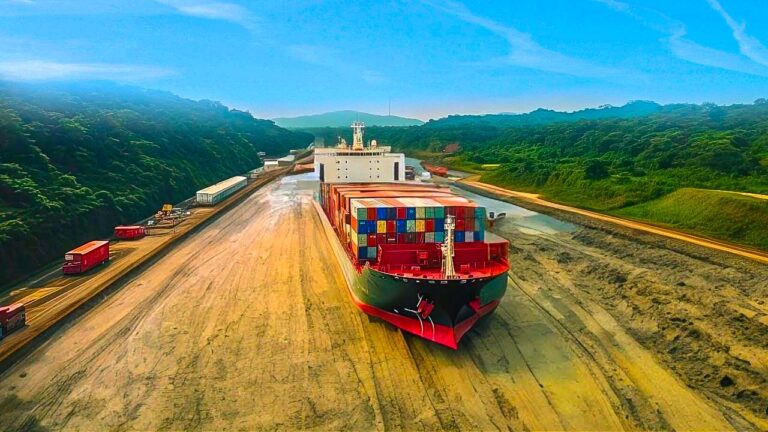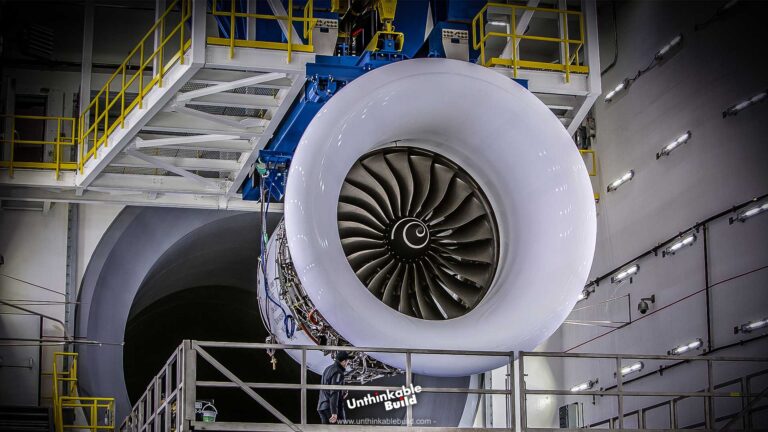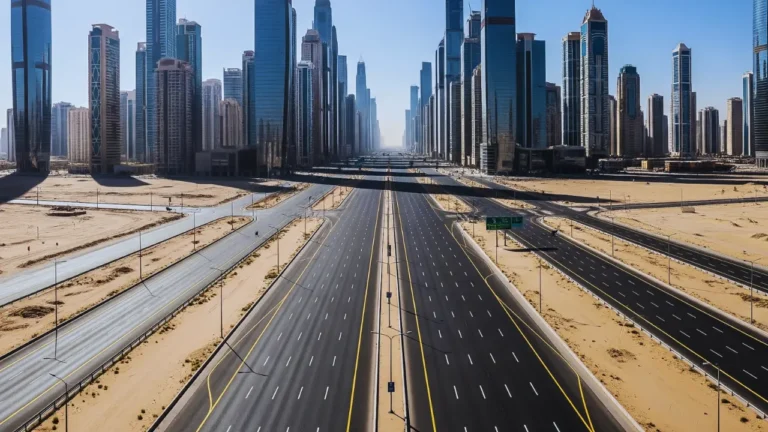Yangqu Dam: The World’s First AI-Controlled Mega Project
High on the Tibetan Plateau, an ambitious project is reshaping how we think about construction. Towering 180 meters, the Yangqu Dam isn’t just another hydroelectric development it’s a proof of concept for a future where infrastructure builds itself. There are no workers with helmets on the ground, no cranes swinging steel beams. Instead, fleets of machines bulldozers, rollers, and trucks move in coordination, controlled by a centralized artificial intelligence system. This is the world’s first large-scale, fully autonomous 3D-printed earthwork.
And standing there, watching a machine carve a riverbank with surgical precision while another one compacts it to the millimeter, felt like I was witnessing a shift in human history.
An AI-Controlled Construction Site
At the core of this project is a digital master plan. The central AI slices the dam’s design into thousands of horizontal layers. Each machine on-site knows exactly what to do within each layer one machine moves material, other shapes it, and other compacts it. Every vehicle sends real-time feedback to the AI, which instantly adjusts operations based on changing ground conditions or detected variances. There’s no pausing for rework. No waiting for inspections. The site corrects itself as it builds.
In essence, the entire dam is being “printed” layer by layer not with concrete, but with compacted earth mirroring the logic of additive manufacturing on a vast scale. This is not just automation. It’s autonomy at a level few imagined possible.
Why the Tibetan Plateau Matters
Choosing the Tibetan Plateau wasn’t just about testing technology in extreme conditions. This region holds geopolitical weight. The plateau feeds Asia’s great rivers the Yellow, the Yangtze, the Mekong and controls the water lifeline for over a billion people. Building dams here gives China powerful leverage, not only in energy production but in water diplomacy.
The terrain, though, is punishing. The air is thin. Earthquakes are common. Temperatures can swing drastically within hours. But by using machines that never sleep and never tire, China can push through where human labor simply can’t survive long-term.
For China, this dam isn’t only a step toward energy independence. It’s about long-term dominance in resource control and infrastructure leadership.
A Second Life for Yangqu
The original Yangqu Dam began operations in 2010 and generated 1,200 megawatts enough to power over a million homes. But the need for more clean energy pushed Chinese engineers to rethink their approach. Rather than rebuild using the same model, they started over with a radically different idea: what if the dam could be rebuilt without human hands?
This reimagined Yangqu isn’t just larger or more efficient. It’s a blueprint for the next era of megaprojects one where AI becomes both architect and builder.
Why China Is Automating Infrastructure
China faces a shrinking labor force and an aging population. Younger generations aren’t flocking to construction jobs. Meanwhile, the government is pushing forward with its 2060 carbon neutrality target, demanding faster, cleaner builds.
Autonomous machines offer a solution. They reduce risk, maintain precision, and work around the clock. Unlike humans, they don’t fatigue, and they don’t make decisions based on guesswork. And in areas like the Tibetan Plateau where altitude sickness can cripple crews machine labor is not just cheaper but necessary.
By shifting toward AI-led construction, China is solving multiple problems at once: labor shortages, safety risks, and the growing complexity of megastructures.
How 3D Printing Works at This Scale
This isn’t a machine with a robotic nozzle spraying out layers of material. Instead, the site itself is the printer.
Material is loaded onto trucks, transported to the exact location, shaped by bulldozers, and compacted with rollers to strict density specifications. High-resolution sensors embedded in each machine measure the compaction quality. The data feeds back to the AI in real time.
If any layer fails to meet tolerances, the system modifies its commands immediately. There’s no waiting for engineers to review logs or recheck progress. It’s a continuous feedback loop that ensures accuracy with every pass.
The result: reduced waste, improved speed, and a level of consistency rarely achieved in human-led projects.
Environmental Red Flags
Still, the Yangqu project raises serious concerns. The Tibetan Plateau is a fragile ecosystem, home to glaciers and permafrost that regulate Asia’s climate. Dams alter water flows, increase the risk of landslides, and disturb wildlife corridors.
Melting permafrost already destabilized by climate change is now compounded by heavy construction. The weight of the dam and earth-moving activities could accelerate ground degradation. This risks not only the local ecology but also the long-term stability of the structure itself.
Culturally, the region holds significance for Tibetan communities. Dams often require the relocation of villages and disrupt centuries-old ways of life. These consequences rarely receive the same attention as the engineering feats.
The Cost of Replacing Humans
Autonomy has a hidden price: jobs. Traditional dam construction requires thousands of workers, from laborers to engineers. By automating everything, China is creating a model that could erase those roles.
For policymakers, this raises uncomfortable questions. Who benefits from the efficiency? Who controls the wealth generated by automation? If only a few tech firms and government entities oversee these projects, what happens to the displaced workforce?
This is a global issue. As other countries follow China’s lead, the social cost of machine-led infrastructure will become harder to ignore.
Connecting the Dots: Rogun, Three Gorges, and BRI
To understand the broader implications, consider The Rogun Dam in Tajikistan. Currently the tallest dam in the world, Rogun was built using conventional methods thousands of workers, decades of effort, and constant delays. Compare that to Yangqu, which may finish faster with fewer errors and lower long-term maintenance costs. The contrast reveals where the future is heading.
But speed isn’t everything. Take the Three Gorges Dam the largest hydroelectric project in history. It generates over 22,000 megawatts but remains a source of worry. If it ever failed, the flood would devastate entire cities downstream. Tens of millions could be affected within hours. The lesson? Size alone doesn’t make infrastructure safe or sustainable.
China’s push for mega-dams also connects to its now-troubled Belt and Road Initiative. Initially envisioned as a global infrastructure empire, the BRI has faltered under debt defaults, political resistance, and logistical missteps. Automation might allow China to build faster at home, but exporting that model hasn’t worked as planned. Local trust, environmental concerns, and governance issues continue to undermine its influence abroad.
A Glimpse of What’s Coming
Yangqu is part of something much larger. China has already tested 3D-printed bridges, modular housing blocks, and roads embedded with real-time sensors. The goal is clear: cities that build and maintain themselves.
Imagine roads that heal their own cracks. Bridges that notify authorities before failure. Entire districts constructed by robots working off a master algorithm.
The world is watching. And if this works, the blueprint will spread from Central Asia to Africa, where infrastructure is still catching up and the appeal of AI-led projects will grow.
A Future Worth Building?
So what does Yangqu represent? A triumph of engineering? A tool of geopolitical power? Or a sign of the growing gap between technology and humanity?
It’s all of those things. It reflects our ability to build at scale but also our willingness to push boundaries in fragile environments. It offers precision and speed but displaces communities and workers. It answers the question of how to build without asking who should decide where and why.
As someone who stood there, watching machines move in silence under the cold sky, I saw more than a dam. I saw a decision. One that every country will have to make, sooner than it thinks.

